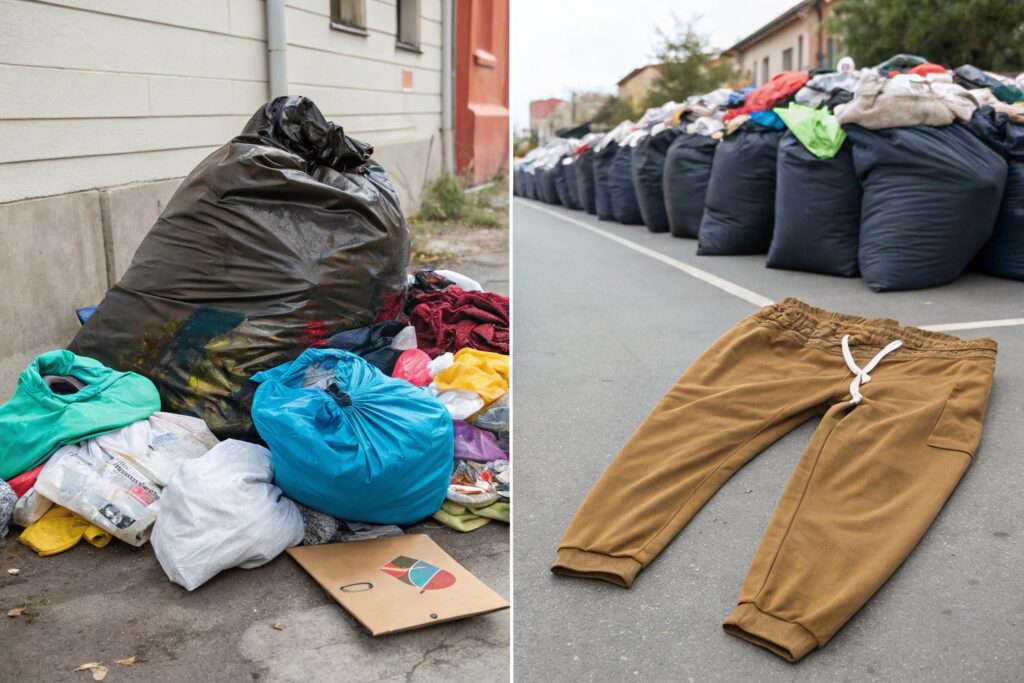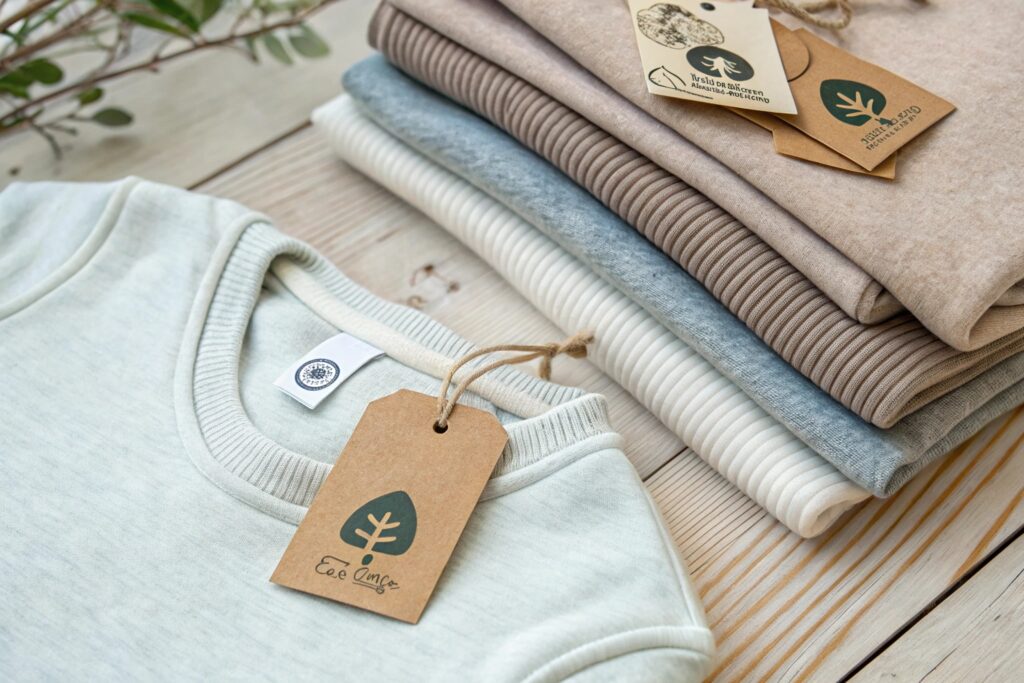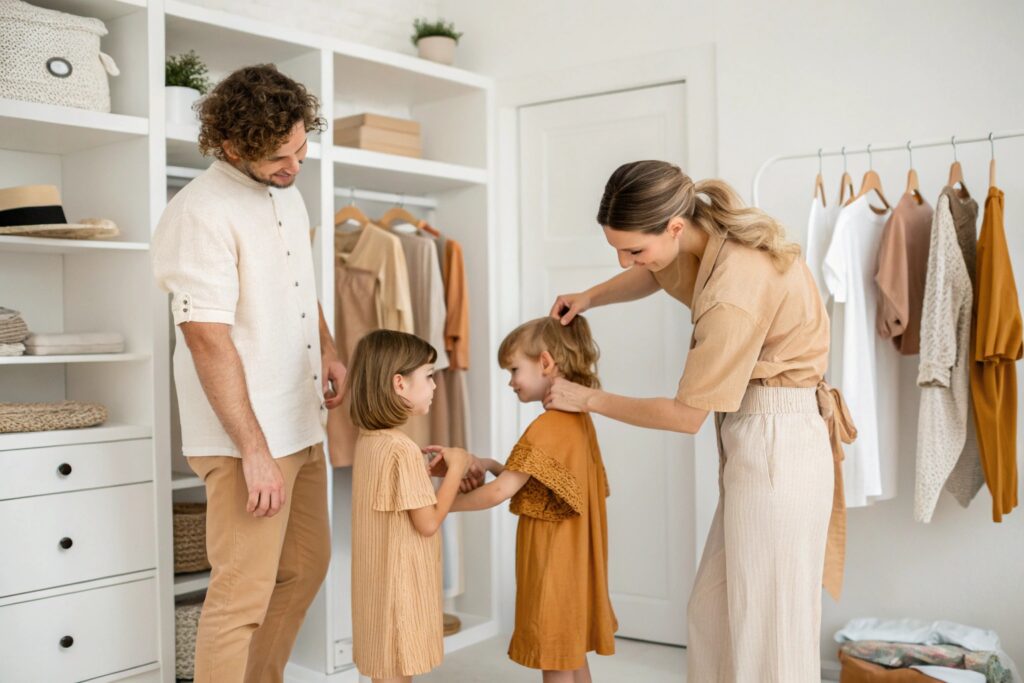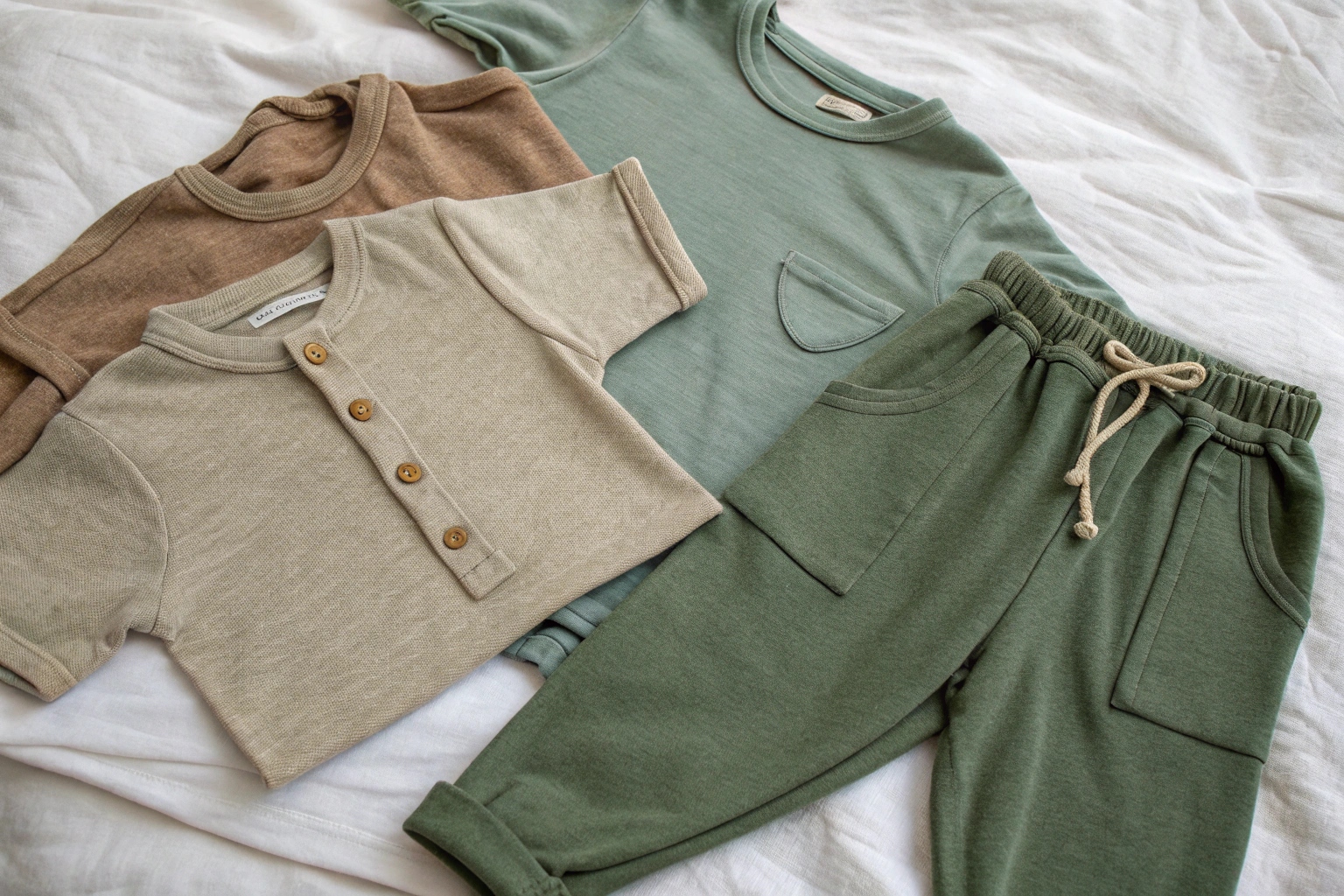Modern families are becoming more mindful of what they buy, wear, and throw away—and children’s fashion is no exception.
Capsule clothing aligns perfectly with the values of eco-conscious households, reducing waste and encouraging mindful consumption.
I’ve watched this shift unfold firsthand, especially among our clients in North America and Europe. Capsule collections are no longer just about style—they’re part of a bigger conversation about sustainability and responsibility.
Reducing Textile Waste with Smarter Wardrobes?
Every year, families discard bags of barely worn kids’ clothes due to fast growth and fast fashion.
Capsule wardrobes reduce textile waste by encouraging smarter purchasing and longer garment use.

How does capsule clothing reduce overconsumption in households with young children?
Children grow fast, but that doesn’t mean they need piles of clothes. In traditional wardrobes, many pieces are impulse buys or trendy items that don’t mix well with others. They end up worn once—maybe twice—before being forgotten.
Capsule logic avoids that trap. Parents buy 10–15 versatile pieces, all designed to work together. That means fewer total items, but each one gets worn more often. At Fumao Clothing, we design kidswear collections with cross-season usability in mind. One hoodie, one neutral pant, three layered tops—that alone covers dozens of combinations.
I’ve worked with clients who reported that after switching to capsule formats, their customers cut clothing waste by over 40%. That’s a powerful number—both environmentally and economically.
What’s the long-term impact of reducing clothing waste on the environment?
Less waste means:
- Fewer garments in landfills
- Lower carbon emissions from fewer manufacturing runs
- Reduced water consumption in cotton and dye production
- Less microplastic pollution from synthetic fibers
Even small changes in how families shop can lead to large-scale impact. If 1 million households reduce their wardrobe size by just 30%, that could eliminate over 10,000 tons of textile waste annually.
Our factory supports this goal by producing limited-run capsule batches, avoiding overproduction that plagues fast fashion. Less stock. Less trash. More value.
The Environmental Benefits of Fewer, Better Pieces?
Not all clothes are created equal. Capsule wardrobes emphasize quality, not quantity—and that’s great news for the planet.
Fewer, better-made garments reduce resource use and environmental damage, from raw material to final wear.

What materials and construction methods make capsule clothing more sustainable?
Eco-conscious capsules begin with material selection. At Fumao, we offer organic cotton, bamboo rayon, and GOTS-certified blends to clients targeting green-minded consumers.
Key sustainable features include:
- Low-impact dyes that require less water
- Flatlock seams to extend garment life
- Pre-shrunk, pre-washed fabrics to reduce energy waste in consumer use
- Modular sizing that fits through multiple growth phases
Capsule clothing also encourages longevity. Instead of clothing meant to last 5–10 wears, we aim for 50+. That dramatically cuts the per-use environmental cost.
How do well-made capsule pieces compare to traditional fast fashion in lifecycle emissions?
Let’s break it down with a lifecycle emissions comparison:
| Garment Type | Emissions per Item | Average Lifespan | Emissions per Wear |
|---|---|---|---|
| Fast Fashion T-shirt | 6.0 kg CO₂e | 5–8 wears | 0.8–1.2 kg CO₂e |
| Capsule Cotton T-shirt | 8.5 kg CO₂e | 50+ wears | ~0.17 kg CO₂e |
By increasing longevity, we reduce total environmental cost—even if production quality is higher upfront. Our clients use this data to position their capsule collections as both eco-responsible and cost-effective.
How Capsules Support Ethical Fashion Choices?
Sustainability isn’t just about the planet—it’s about people, too.
Capsule fashion often involves ethical sourcing and production, helping families support fair labor and responsible business practices.

How can capsule production be more ethically aligned than mass-produced alternatives?
Capsule collections favor smaller runs and higher quality, which naturally align with more ethical practices. Here’s what we do at Fumao Clothing to support this:
- Fair labor policies: We follow BSCI and SEDEX compliance standards.
- Smaller production cycles: Lower stress on workers and machinery.
- Transparency: Full traceability from fabric mill to packing.
- On-demand customization: Reduces overwork and waste.
Fast fashion often outsources to the cheapest bidder, sacrificing oversight and ethics. Capsule lines, by contrast, prioritize stability and relationship-building. Our buyers know who made their garments—and under what conditions.
How can brands communicate ethical values through capsule collections?
It’s all about storytelling. When a capsule product includes:
- A photo of the production team
- A breakdown of material sources
- A QR code that shows the factory process
- An eco-score label or ethical badge
…it builds trust. I’ve seen American and European clients use these storytelling tools to drive double-digit growth in return customers.
Ethical transparency is no longer a “nice to have”—it’s a major factor in how eco-conscious families choose where to shop.
Teaching Kids Sustainability Through Clothing?
Fashion choices shape values early. And capsule wardrobes can be a powerful teaching tool.
By choosing capsule wardrobes, families model sustainability—and teach kids that style and responsibility can go hand in hand.

How can parents use clothing to introduce environmental awareness to children?
Here are some simple, real-world steps I recommend to parents—and to our brand buyers targeting young families:
- Let kids help build the capsule: Teach why each piece was chosen.
- Track wears per item: Turn it into a game—who wore their jacket the most this month?
- Learn where clothes come from: Read tags together. Look up countries of origin.
- Donate or repurpose: Let kids help choose which outgrown items to pass on.
These small rituals embed values. And capsule wardrobes—by being limited, intentional, and long-lasting—make the teaching moments easier and more consistent.
What role can schools or brands play in promoting sustainable fashion education?
Several of our clients now partner with schools to provide “capsule kits” for uniforms or eco-awareness campaigns. Here’s what works well:
| Partner Type | Education Tool Used |
|---|---|
| Schools | Capsule wardrobe planners + eco journals |
| Brands | Interactive hangtags explaining capsule use |
| NGOs | Workshops on fashion and climate |
At Fumao, we help clients design these educational tools as part of our production support. It’s not just about selling clothes—it’s about reshaping how the next generation thinks about them.
Conclusion
Eco-conscious families are turning to capsule wardrobes for good reason: they reduce waste, promote ethics, and teach kids how to dress with purpose. At Fumao Clothing, we’re proud to support this shift—one smart collection at a time.










